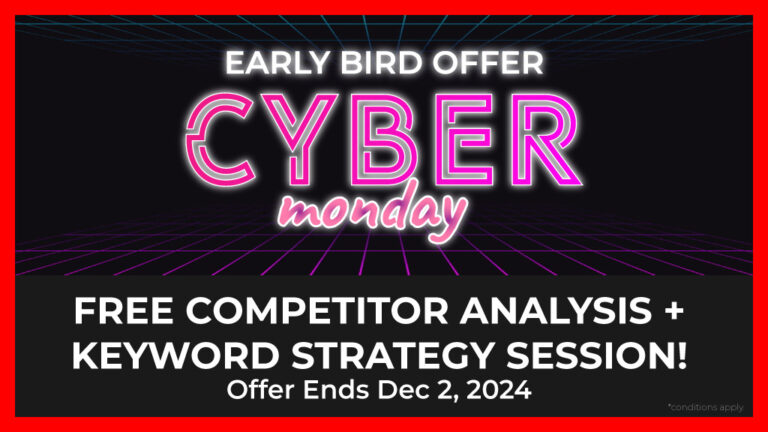No time to read; we’ve got you covered. Could you listen to the article here?
Digital marketing involves promoting businesses through online platforms using different strategies under your business’s overall marketing plan.
Social media, email, and search engines are some of the most popular channels through which digital marketers contact their customers.
So, let’s see how Digital marketing can be used in your business to optimize customer reach, get a brief overview of the overall marketing mix, and how to create a marketing plan for your business considering the 7 P’s in Marketing.
First, below are some popular ways businesses can enhance their digital brand presence.
Social Media Marketing (SMM)
Social media marketing, or SMM, promotes your brand through social media such as Facebook, Instagram, Twitter, LinkedIn, and many more. Social media is a powerful platform, with approximately 3.96 billion active users as of 2021.
This is done the same way as SEO, but different social media platforms have different built-in tools to promote a particular page or feed.
Unlike other strategies, if you use SMM, you must be active on social media and prepared to respond to customer queries immediately.
In 2023, TikTok will take over social media as more people become accustomed to video content.
Search Engine Optimization (SEO)
SEO is optimizing your website to rank above your competitors in Search Engine Result Pages (SERPS). The main objective of SEO is to boost your website’s organic traffic.
Further, SEO makes your content and information relevant to Google algorithms. Keyword research and implementation are the ways to achieve this.
You must find the most popular words people use to search for your business and meaningfully include those keywords and phrases in your content.

Pay Per Click Advertising (PPC)
This is an internet model where you advertise your business online and pay an agreed-upon fee for each click. You are buying visits to your website or page.
Google has a similar platform called Google Ads that offers this service.
The fee that should be incurred for each click depends on the size of the competition.
For example, suppose your business operates in a niche with low competition. In that case, the CPC will be lower for companies operating in highly competitive markets.
Affiliate Marketing
This is a commission-based marketing strategy where influencers promote other businesses (products or services) through their platforms.
For example, YouTubers and other social media influencers promote or review products and services and get paid for them. This method is widely used to encourage known products with low competition.
Above are only a few ways you can use digital marketing to optimize your business.
Now that we have a basic idea about how you can take your business online, get your audience’s attention, and build your reputation and trust, let’s look at the overall picture in terms of marketing.
Marketing is a broad discipline involving multiple strategies and activities to promote products or services and drive sales. The critical segments are advertising, Promotion, Publicity, Public Relations, and Sales.
How do you use the 7 P’s of marketing?
Each of the elements mentioned here—from Product, Price, Place (Distribution), Promotion, People, Process, Physical Evidence, and Positioning—is a key component of the marketing mix, often referred to as the “7 Ps” of marketing. Let’s take a look at them individually.
Product
Product refers to what the company is offering and what problem of society it solves, whether it’s a physical good, a service, or an idea. It involves,
- Development: Creating products that meet the needs and desires of target customers, businesses are successful if they actively solve a problem by providing the solution. Hypothetically, a weapons manufacturer will influence a war somewhere, sell weapons to both sides and profit from the war. Even though this example seems extreme, it is not that far-fetched with what’s happening worldwide lately.
- Features and Design: Ensuring the product has appealing attributes and functionality. The product must make life easy, and people should understand how to use it without reading a manual to some extent.
- Quality and Branding: Maintaining high standards and creating a solid brand identity. Suppose you think you are a boutique shop owner or a small business. In that case, you will find it easier to become an enterprise-level owner if you focus on developing a brand that resonates with people and their emotions. Also, your product should satisfy the need and make people want to return to you, creating repeat business.
Price
Price involves setting a value for the product that reflects its worth, competitiveness, and the customer’s willingness to pay.
- Pricing Strategy: Choosing between premium, penetration, or discount pricing strategies. Can you offer something free to capture the market? Yes? No? People often feel negative when you offer something for free. Hence, it’s always best to give more value for their price. Having a good understanding of human psychology helps in pricing strategy.
- Price Elasticity: Understanding how price changes affect demand. Understanding how price changes impact sales (price elasticity) is vital to intelligent pricing. High elasticity means customers are sensitive to price hikes, so keep yours competitive. Low elasticity means customers are less fazed by price increases. Consider factors like substitutes and necessity. Many substitutes? Price is more important. Essential product? Price matters less. Use this knowledge to set prices and promotions and compete effectively. Remember to review and adjust regularly as your business grows!
- Promotional Pricing: Temporary discounts or offers to boost sales during seasons or special weekends are a strategy to capitalize on human spending. Use Easter Sunday Offers, Black Friday offers, Chinese New Year Offers, and Holiday season discounts.
Place (Distribution)
Place refers to how the product is distributed and made available to customers.
- Distribution Channels: Selecting the most effective ways to deliver the product (e.g., retail stores, online platforms). Have you noticed that luxury brands make their products hard to buy by pricing and limiting production? That, too, is a strategy that works best for that market. So, understanding how to place your products and who you are targeting is essential.
- Market Coverage: Deciding on the intensity of distribution (intensive, selective, or exclusive). Services like Grab are only available in specific parts of Asia, and they are not in west asia, where are Pickme, when they initially started, was only available in Colombo, and then they expanded. Similarly picking how you can offer the best service within your capacity is important at the start.
- Logistics: Managing the supply chain to ensure efficient delivery. One of our colleagues ordered a dress for his girlfriend from a reputed company in Sri Lanka through their website, and they delivered the same product twice when he had paid only for one. When he reported it, they ignored it. It happened over three times, and finally, he decided not to order anymore. Situations like this are very rare, but they can be easily avoided.
Promotion
Promotion involves communicating with the market to generate awareness and persuade customers.
- Advertising: Paid media efforts to reach a broad audience.
- Sales Promotion: Short-term incentives like discounts and contests.
- Public Relations (PR): Managing the brand’s image and relationships with the public.
- Publicity: Gaining unpaid exposure through media coverage.
People
People refer to everyone involved in the marketing and delivery of the product, including:
- Employees: Training staff to represent the brand effectively and provide excellent service.
- Sales Team: Directly engaging with customers to close sales and build relationships.
- Customer Service: Offering support to enhance customer satisfaction and loyalty.
Process
The process involves the methods and procedures to deliver the product or service.
- Operational Efficiency: Streamlining processes to ensure cost-effectiveness and quality. Implement strategies to reduce operational time and efficiency, minimizing repetitive work and maximizing employee input through industrial engineering strategies.
- Customer Experience: Designing processes that provide a smooth and satisfying customer journey, from calling customers for feedback to ensuring you send them a greeting message on their birthdays with a special offer, etc.
- Feedback Mechanisms: Collecting and using customer feedback to improve processes. Taking the improvement points and analyzing the business will make the customer’s experience with your brand more lively and make the customer happy to buy from you.
Physical Evidence
Physical Evidence includes the tangible aspects that help customers evaluate the product before purchase, especially in services.
- Environment: Creating a physical or digital space that reflects the brand’s values. Attending tradeshows, setting up your stall, or doing road shows can help people get an experience of your product or service before hand and give you the opportunity to grow your potential leads.
- Packaging: Designing appealing and functional packaging.
- Branding Elements: Consistent use of logos, colors, and other brand identifiers across all touchpoints.
Positioning
Positioning is about how the product is perceived in the market relative to competitors. It involves:
- Market Positioning: Defining the product’s unique value proposition and differentiating it from competitors.
- Messaging: Crafting compelling messages that resonate with the target audience.
- Target Audience: Identifying and understanding the specific group of consumers the product is aimed at.
Integration of the 7 Ps with Marketing Segments
- Advertising and Promotion fall under the Promotion element, as they are both strategies for communicating with and persuading the market.
- Publicity and Public Relations (PR) also fall under Promotion. They focus on building and maintaining a positive image and relationships with the public.
- Sales are directly related to People and Promotion, involving personal interactions to close deals and drive revenue.
- Product development and quality are essential for offering something valuable to customers.
- Price strategies affect how the product is perceived and its accessibility.
- Place (Distribution) ensures the product is available where and when customers need it.
- People, Processes, and Physical Evidence enhance the overall customer experience and reinforce the brand’s promise.
- Positioning: This shapes the product, given the competitive landscape, influencing all other marketing mix elements.
The 5 Segments You Must Have
Marketing is a broad discipline involving multiple strategies and activities to promote products or services and drive sales. Here’s an explanation of the critical segments: Advertising, Promotion, Publicity, Public Relations, and Sales.
Advertising
Advertising involves creating and distributing paid messages through various media channels to inform and persuade potential customers. The goal is to build awareness, generate interest, and drive sales. Critical elements of advertising include:
- Media Channels: TV, radio, online, print, and outdoor.
- Creative Content: Crafting engaging ads that capture attention and communicate the brand message.
- Targeting: Identifying the right audience to maximize the impact of the ad.
- Campaigns: Running organized efforts with specific objectives and timelines.
Promotion
Promotion encompasses a variety of short-term tactics designed to stimulate interest and encourage immediate sales. These tactics often include:
- Discounts and Coupons: Offering price reductions to entice customers to purchase.
- Contests and Sweepstakes: Engaging customers with the chance to win prizes, creating excitement around the brand.
- Samples and Free Trials: Allowing customers to try products at no cost to build interest and trust.
- Loyalty Programs: Rewarding repeat customers to foster loyalty and repeat business.
Publicity
Publicity refers to the unpaid exposure a brand receives through media coverage. It results from efforts to generate buzz and is often considered more credible because the brand does not directly control it. Critical aspects of publicity include:
- Media Coverage: Getting featured in news articles, blog posts, and media reports.
- Press Releases: Distributing newsworthy information to the media to gain coverage.
- Events and Sponsorships: Participating in or sponsoring events to attract media attention.
Public Relations (PR)
Public Relations involves managing the brand’s image and relationships with various stakeholders, including the media, customers, employees, and the community. The goal is to build and maintain a positive reputation. PR activities include:
- Media Relations: Building and maintaining relationships with journalists and media outlets.
- Crisis Management: Handling negative publicity and protecting the brand’s reputation during adverse events.
- Corporate Communications: Communicating key messages to stakeholders through newsletters, press releases, and social media.
- Community Engagement: Involvement in community activities and charitable initiatives to build goodwill.
Sales
Sales focus on directly engaging with potential customers to persuade them to purchase products or services. It involves personal interactions and relationship-building. Critical components of sales include:
- Sales Team: Trained professionals who interact with customers, understand their needs, and offer solutions.
- Sales Strategy: Developing plans to reach sales targets, including setting goals, identifying target markets, and defining tactics.
- Customer Relationship Management (CRM): Using tools and techniques to manage and analyze customer interactions and data to improve relationships and drive sales.
- Closing Techniques: Methods used by salespeople to finalize deals and secure purchases.
In Conclusion
By effectively integrating these components, companies can create a robust marketing strategy that meets customer needs, builds substantial brand equity, and drives sales.
Segments such as advertising, promotion, publicity, public relations, and sales work together to create a comprehensive marketing strategy. This is why it’s vital to have an overall marketing strategy and then magnify that with a digital marketing plan.
Just like how Product, Price, Place (Distribution), Promotion, People, Process, Physical Evidence, and Positioning are vital components of the marketing mix, often referred to as the “7 Ps” of marketing, each plays a unique role but ultimately aims to attract, engage, and retain customers while driving sales and building brand equity.
For example, advertising might create initial awareness; promotion can drive short-term sales boosts, publicity, and PR to develop and maintain a positive image, and sales teams close deals and foster long-term customer relationships. Effective marketing integrates these elements to achieve cohesive and powerful results.
Click here to visit the HypeX360 Blog.









